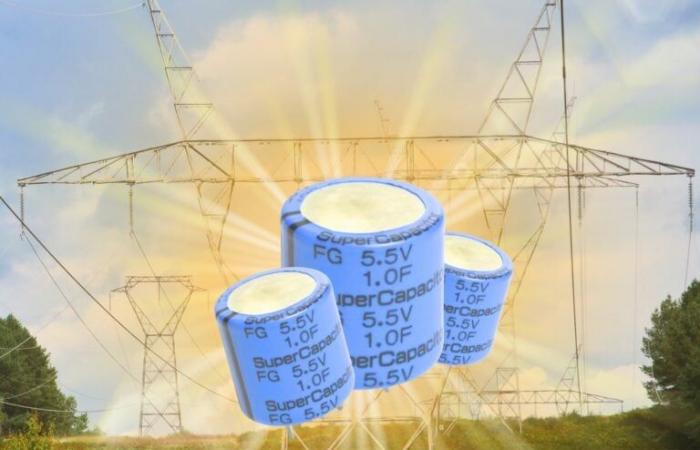Illustration: Energy Revolution (supercapacitor: Kemet).
The increasing integration into the electricity network of non-controllable electricity production capacities leads to significant risks of no longer being able to ensure the stability of this network. And this difficult point becomes crucial in small and isolated networks, such as those on islands, compromising their capacity to produce a significant proportion of renewable energy. A Spanish start-up offers a so-called “hybrid” energy storage technology to ensure the required quality and stability of the network, benefiting from the combined advantages of supercapacitors and lithium-ion batteries.
The Canary Islands are this small archipelago located off the coast of Morocco, which forms one of the seventeen autonomous communities of Spain. They are populated by 2.2 million inhabitants, spread over an area of 7,400 km2, or the order of magnitude of that of a French department. Spain has set proactive objectives regarding the energy transition, and in particular plans for the installed power in terms of energy storage to increase from 8.3 GW in 2021 to 20 GW by 2030.
The Canaries are required to participate in achieving these objectives, while nevertheless occupying a very special place. In fact, island electricity networks are smaller and isolated, meaning that they are not, or only minimally, interconnected. Under these conditions, the constraints on electricity storage are increased to ensure the stability of the network, and in particular when it comes to accommodating a significant proportion of non-controllable production capacities.
Read also
Old materials for the electricity storage system of tomorrow?
The promises of a hybrid system to ensure network stability
It is in this context that the ViSync project was developed. The latter implements a so-called hybrid storage technology, based on the one hand on lithium-ion batteries and on the other hand on supercapacitors. This synergy is of great interest, because it combines technologies that have different reaction speeds to provide the electrical power necessary to balance the network. This balance, in fact, requires putting in place means to ensure very significant powers over very short periods (less than a second, or a few minutes), and less significant powers, but over longer periods ( up to a few hours).
Supercapacitors are able to respond to needs very quickly, but they do not have a large energy storage capacity. And this is where batteries come in, for greater energy needs, but with lower reactivity. This architecture avoids having to oversize the battery system in power, while preserving their lifespan.
Another advantage of the ViSync project is that it is equipped with so-called “grid-forming” control systems (which can be translated as “network trainer”, or “autonomous”). This type of system is capable of ensuring the good characteristics of the network (voltage, frequency), in the absence of alternators from conventional thermal power plants, and of no longer just being passive (“grid-following”).
The overall optimization of the system makes it possible in principle to cover the stabilization needs of the electricity network, even when it includes a significant proportion of non-controllable energy sources in a small, non-interconnected network. And it is to demonstrate this technology that the project in the Canary Islands was designed.
Read also
The 3 largest electricity storage sites in the world
Broad collaboration between numerous partners
The ViSync project is indeed a pilot project. It benefits from feedback from previous projects on a smaller scale, which also aimed to be able to provide significant power with very high responsiveness. For example, the RES+ project, in Spain, or the INERTIA+ project, in the United Kingdom, which can provide 5 MW of power very quickly, and which can store 38.88 MJ (or approximately 10 kWh).
The installation will be connected to the high voltage transmission network common to the islands of Lanzarote and Fuerteventura, to the east of the archipelago, more precisely at the 66 kV substation of Mácher (Lanzarote). The system will have a peak power of 16 MW (18.8 MVA maximum apparent power) and a storage capacity of 3.45 MWh.
The project is structured around a partnership bringing together a large number of partners. Firstly, the designer of the system: the company Hybrid Energy Storage Solution (HESStec), a Spanish start-up. Next comes Elewit, the technological platform of the network operator Redeia (Red Eléctrica de España), which invested in HESStec in particular to support the ViSync project. Other companies are involved: CEN Solutions, S2 Grupo and CERE. The project is also subsidized by ERHA PERTE, a strategic program of the Spanish State intended to develop renewable technologies, green hydrogen, and energy storage.







